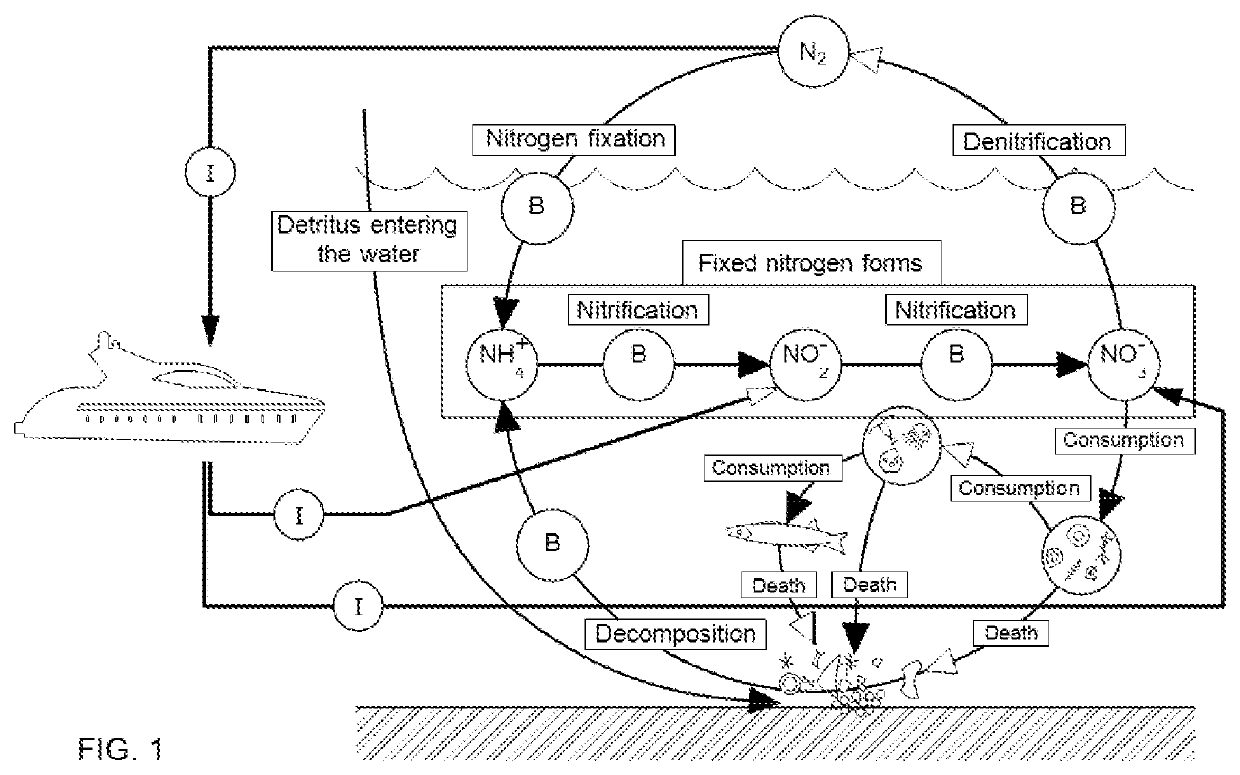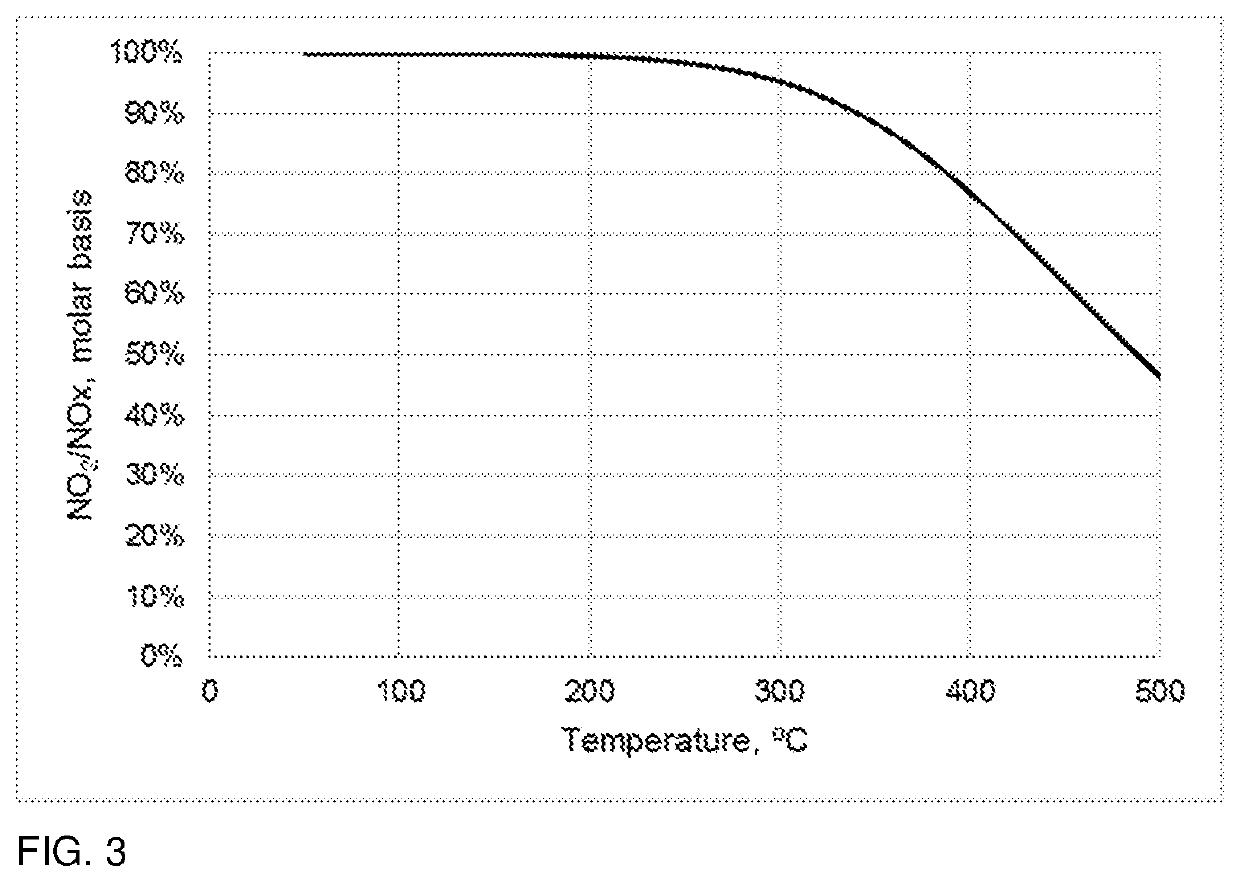Process and Apparatus for Reducing Nox Emissions
a technology of nox and process, applied in mechanical equipment, exhaust treatment, gas treatment, etc., can solve the problems of large scale, not over the full power range, so as to reduce nox emissions, increase the weight of the ship, and save valuable spa
- Summary
- Abstract
- Description
- Claims
- Application Information
AI Technical Summary
Benefits of technology
Problems solved by technology
Method used
Image
Examples
example
[0050]A luxury yacht equipped with two diesel-fueled propulsion engines of 1140 kW is taken as an example. This yacht must comply with IMO tier III emission regulation, and emit a maximum of 2.06 g / kWh of NOx, which is currently only possible by using an SCR system. However, it should be noticed that the IMO test cycles cover the engine load range from 25% to 100%.
[0051]The SCR system is designed to work at exhaust gas temperatures above 250° C., which for the example vessel is achieved at engine loads above 10%. Therefore, the SCR system will be off (i.e., no urea will be injected) until the load reaches 10%, and the emissions from the engine will be uncontrolled, as can be seen in FIG. 4. When the temperature is above 250° C., urea is injected and the NOx emissions are regulated to a maximum of 1 g / kWh, according to the SCR system design.
[0052]In contrast, the system according to the invention can be used to control the NOx emissions to below 2 g / kWh in the full range of engine op...
PUM
| Property | Measurement | Unit |
|---|---|---|
| temperature | aaaaa | aaaaa |
| temperature | aaaaa | aaaaa |
| temperatures | aaaaa | aaaaa |
Abstract
Description
Claims
Application Information
 Login to View More
Login to View More - R&D
- Intellectual Property
- Life Sciences
- Materials
- Tech Scout
- Unparalleled Data Quality
- Higher Quality Content
- 60% Fewer Hallucinations
Browse by: Latest US Patents, China's latest patents, Technical Efficacy Thesaurus, Application Domain, Technology Topic, Popular Technical Reports.
© 2025 PatSnap. All rights reserved.Legal|Privacy policy|Modern Slavery Act Transparency Statement|Sitemap|About US| Contact US: help@patsnap.com



